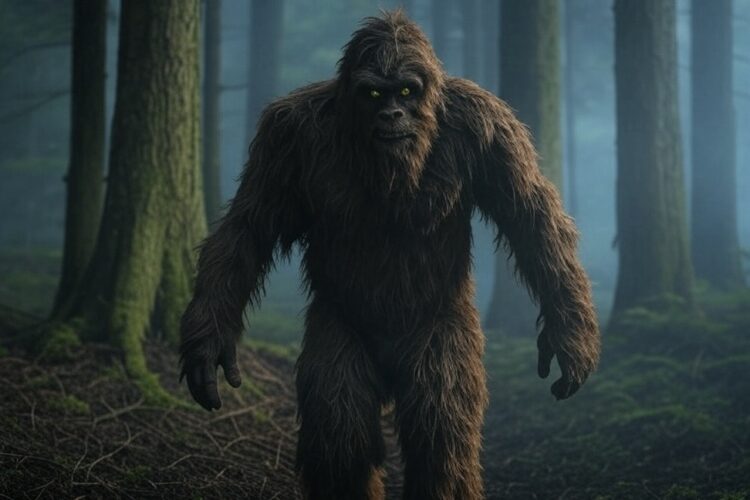For centuries, tales of mysterious, ape-like creatures lurking in the wilderness have captivated human imagination. From the dense forests of North America to the snowy peaks of the Himalayas, these mythic humanoids—known by names like Bigfoot, Sasquatch, Yeti, and Abominable Snowman—stand as enduring symbols of the unexplained. Classified as cryptids, these elusive beings straddle the line between folklore and potential reality, fueling debates among skeptics, enthusiasts, and researchers in the field of cryptozoology. This article explores every facet of these legends, weaving together broad insights and niche details—from sightings and evidence to hoaxes and cultural significance—offering a comprehensive resource on Bigfoot and its kin.
Origins of the Bigfoot Legend
The story of Bigfoot, often interchangeably called Sasquatch, traces back to Indigenous oral traditions in North America. Tribes like the Salish people described a hairy, humanoid creature inhabiting the forests, a being both revered and feared. The term “Sasquatch” itself derives from the Halkomelem word “sásq’ets,” meaning “wild man.” Similarly, the Wendigo—a gaunt, supernatural humanoid from Algonquian lore—shares thematic ties, though its cannibalistic nature sets it apart from the gentler giant of Bigfoot tales.
Across the globe, parallel legends emerged. In the Himalayas, the Yeti or Abominable Snowman became a fixture of Sherpa stories, a towering, ape-like figure navigating icy cliffs. Australia’s Yowie, Russia’s Almasty, and even the swamp-dwelling Skunk Ape of the American South reflect a universal human fascination with mythical creatures that defy explanation. Are these tales mere folklore, or do they hint at something more tangible lurking in the wilderness?
The Rise of Cryptozoology
Enter cryptozoology, the study of hidden or unknown animals. Coined by zoologist Bernard Heuvelmans in the 1950s, the field seeks to investigate cryptids like Bigfoot through a blend of science and speculation. Proponents point to Gigantopithecus, an extinct genus of massive apes that roamed Asia until about 100,000 years ago, as a possible ancestor. Could a remnant population have survived, evolving into the elusive beings reported today? Skeptics argue that the absence of fossils or definitive proof relegates Bigfoot to the realm of legend.
The Bigfoot Field Researchers Organization (BFRO) has been a driving force in modern investigations, cataloging thousands of sightings across North America. Their database includes detailed accounts of footprints, vocalizations, and even tree structures—arranged sticks or broken branches some attribute to Sasquatch behavior. Meanwhile, platforms like Sasquatch Chronicles amplify eyewitness stories, keeping the mystery alive in popular culture.
Iconic Evidence: The Patterson-Gimlin Film
No discussion of Bigfoot is complete without the Patterson-Gimlin film. Shot in 1967 by Roger Patterson and Bob Gimlin in Northern California, this grainy 16mm footage captures a hairy, bipedal figure striding across Bluff Creek. Clocking in at under a minute, the clip remains the gold standard of Bigfoot evidence. The subject, nicknamed “Patty,” displays fluid movement and muscular definition that some argue defy the capabilities of 1960s costume technology. Others dismiss it as a hoax, pointing to inconsistencies in the filmmakers’ story.
Analysis of the film has yielded niche terms like dermal ridges—fingerprint-like patterns allegedly visible in track casts taken from the site. These details fuel debates about authenticity, with believers citing them as proof of a biological entity and detractors insisting they’re fabricated. Decades later, the footage retains its polarizing power, a cornerstone of Bigfoot lore.
Physical Traces: Footprints, Hair, and Casts
Beyond the film, physical evidence forms the backbone of Bigfoot research. Footprints—often measuring 15 to 20 inches long—dot the landscape of reported encounters. The Skookum cast, a 2000 find in Washington state, offers a rare full-body impression, suggesting a creature reclining in mud. Detailed casts reveal dermal ridges and midtarsal flexibility, traits some link to primate anatomy.
Hair samples provide another avenue of study. Labs have analyzed strands collected from alleged Bigfoot sites, often concluding they belong to bears, deer, or humans. Yet, a few cases—like a 2013 study claiming “novel hominid” DNA—keep hope alive among enthusiasts. Critics counter that contamination or misidentification explains these anomalies.
Sounds of the Unknown: Vocalizations and Infrasound
Bigfoot’s presence isn’t limited to the visual. Witnesses describe eerie vocalizations—howls, screams, and guttural roars echoing through the forest. Recordings from California’s Sierra Nevada in the 1970s, dubbed the “Sierra Sounds,” feature chilling calls that defy easy classification. Some researchers propose infrasound, low-frequency waves felt more than heard, as a tool Bigfoot uses to communicate or intimidate.
Wood knocks—sharp raps on trees—add to the auditory puzzle. Habituation sites, where people claim long-term contact with Sasquatch, often report these sounds as a form of interaction. While skeptics attribute them to natural causes like falling branches, believers see them as deliberate signals from an intelligent humanoid.
Cultural Impact and Regional Variants
Bigfoot’s influence extends beyond the woods. In the U.S., the Skunk Ape prowls Florida’s swamps, its name derived from a pungent odor reported by witnesses. Australia’s Yowie blends Aboriginal lore with settler accounts, while the Almasty of the Caucasus Mountains carries a more human-like mystique. Each variant reflects local geography and culture, yet all share the elusive, hairy archetype.
The Wendigo, though distinct, overlaps in North American mythology, embodying a darker, supernatural edge. These regional tales highlight how mythic humanoids adapt to human storytelling, serving as cautionary figures or guardians of the wild.
The Hoax Factor
Not every Bigfoot story holds up. Hoaxes have plagued the field, from fake footprints carved with wooden molds to elaborate costumes. In 2008, two men claimed to have a Bigfoot corpse, only for it to be revealed as a rubber suit stuffed with roadkill. Such stunts cast doubt on legitimate claims, yet they also underscore the mystery’s enduring allure—why else would people go to such lengths?
Scientific Scrutiny and Skepticism
Mainstream science remains unconvinced. No bones, no bodies, no conclusive DNA—Bigfoot lacks the hard proof required for taxonomic recognition. Bears, misidentified humans, and psychological phenomena like pareidolia (seeing patterns in randomness) offer plausible explanations for sightings. Still, the sheer volume of reports—over 10,000 in the BFRO database—challenges outright dismissal.
Why Bigfoot Endures
So why does Bigfoot persist in our collective psyche? It’s more than a monster tale. The creature embodies humanity’s yearning for the unknown, a reminder of untamed spaces in an increasingly mapped world. Whether a remnant of Gigantopithecus, a clever hoax, or pure legend, Bigfoot invites us to question what lies beyond the campfire’s glow.
From the Patterson-Gimlin film to wood knocks and track casts, the evidence—flawed or fascinating—keeps the debate alive. Niche phenomena like infrasound and dermal ridges deepen the intrigue, while groups like the BFRO and stories on Sasquatch Chronicles ensure the mystery thrives. Bigfoot, Yeti, Yowie, or Skunk Ape—whatever the name, these cryptids remain a testament to the power of the unexplained.
In the end, the truth may matter less than the journey. As long as the wilderness whispers and the forest holds secrets, the legend of the mythic humanoid will endure, a hairy, elusive shadow on the edge of discovery.








